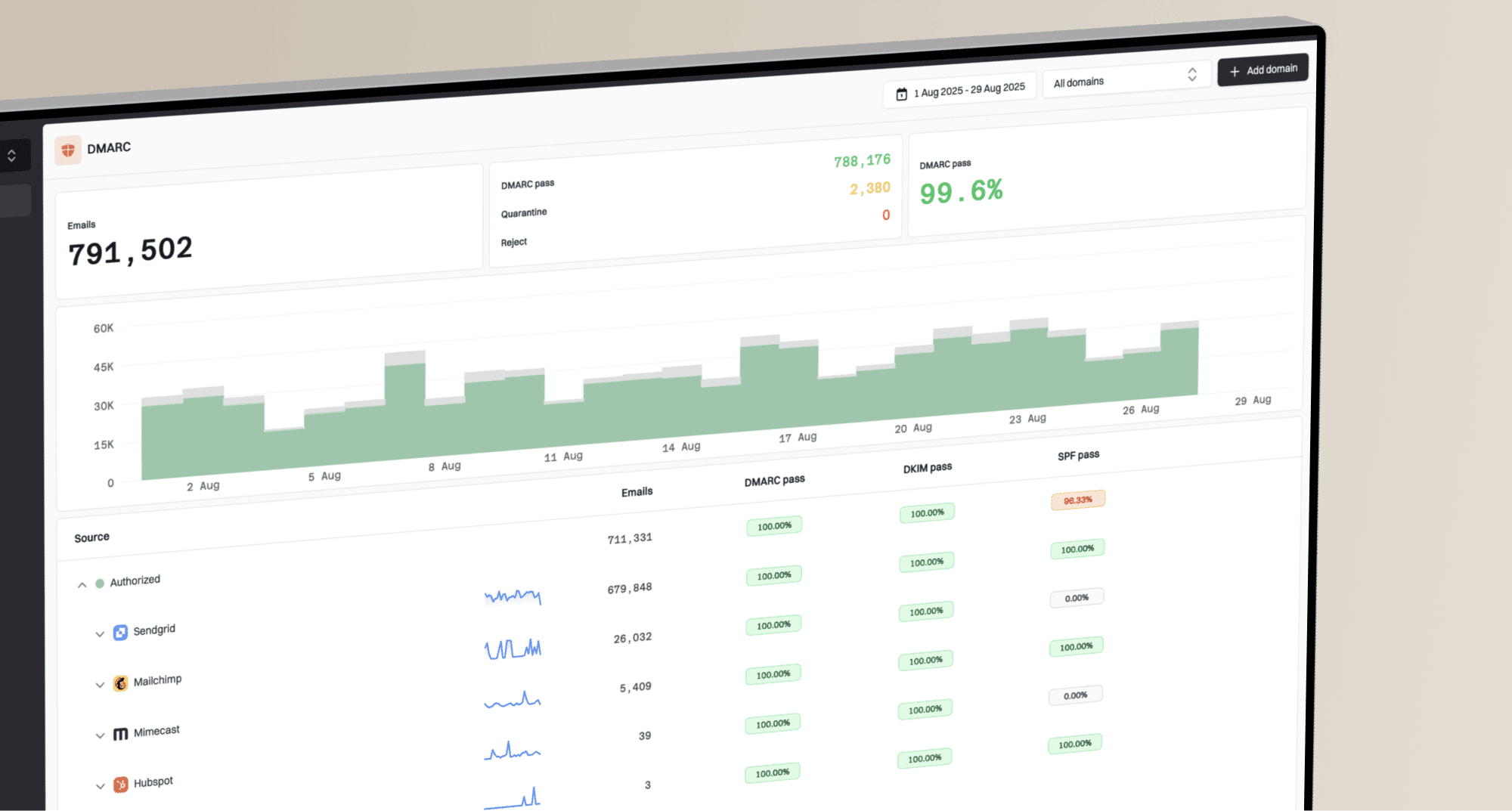Taughannock Networks South Korean Network Blocking List


 Spamhaus
Spamhaus 0Spam
0Spam Cisco
Cisco NoSolicitado
NoSolicitado URIBL
URIBL abuse.ro
abuse.ro ALPHANET
ALPHANET Anonmails
Anonmails Ascams
Ascams BLOCKEDSERVERS
BLOCKEDSERVERS Calivent Networks
Calivent Networks EFnet
EFnet
 JustSpam
JustSpam Kempt.net
Kempt.net
 NordSpam
NordSpam RV-SOFT Technology
RV-SOFT Technology
 Scientific Spam
Scientific Spam Spamikaze
Spamikaze SpamRATS
SpamRATS SPFBL
SPFBL Suomispam
Suomispam System 5 Hosting
System 5 Hosting Team Cymru
Team Cymru Validity
Validity www.blocklist.de Fail2Ban-Reporting Service
www.blocklist.de Fail2Ban-Reporting Service ZapBL
ZapBL 2stepback.dk
2stepback.dk Fayntic Services
Fayntic Services ORB UK
ORB UK technoirc.org
technoirc.org TechTheft
TechTheft Spamhaus
Spamhaus 0Spam
0Spam Cisco
Cisco NoSolicitado
NoSolicitado URIBL
URIBL abuse.ro
abuse.ro ALPHANET
ALPHANET Anonmails
Anonmails Ascams
Ascams BLOCKEDSERVERS
BLOCKEDSERVERS Calivent Networks
Calivent Networks EFnet
EFnet
 JustSpam
JustSpam Kempt.net
Kempt.net
 NordSpam
NordSpam RV-SOFT Technology
RV-SOFT Technology
 Scientific Spam
Scientific Spam Spamikaze
Spamikaze SpamRATS
SpamRATS SPFBL
SPFBL Suomispam
Suomispam System 5 Hosting
System 5 Hosting Team Cymru
Team Cymru Validity
Validity www.blocklist.de Fail2Ban-Reporting Service
www.blocklist.de Fail2Ban-Reporting Service ZapBL
ZapBL 2stepback.dk
2stepback.dk Fayntic Services
Fayntic Services ORB UK
ORB UK technoirc.org
technoirc.org TechTheft
TechTheft Spamhaus
Spamhaus 0Spam
0Spam Cisco
Cisco NoSolicitado
NoSolicitado URIBL
URIBL abuse.ro
abuse.ro ALPHANET
ALPHANET Anonmails
Anonmails Ascams
Ascams BLOCKEDSERVERS
BLOCKEDSERVERS Calivent Networks
Calivent Networks EFnet
EFnet
 JustSpam
JustSpam Kempt.net
Kempt.net
 NordSpam
NordSpam RV-SOFT Technology
RV-SOFT Technology
 Scientific Spam
Scientific Spam Spamikaze
Spamikaze SpamRATS
SpamRATS SPFBL
SPFBL Suomispam
Suomispam System 5 Hosting
System 5 Hosting Team Cymru
Team Cymru Validity
Validity www.blocklist.de Fail2Ban-Reporting Service
www.blocklist.de Fail2Ban-Reporting Service ZapBL
ZapBL 2stepback.dk
2stepback.dk Fayntic Services
Fayntic Services ORB UK
ORB UK technoirc.org
technoirc.org TechTheft
TechTheft Spamhaus
Spamhaus 0Spam
0Spam Cisco
Cisco NoSolicitado
NoSolicitado URIBL
URIBL abuse.ro
abuse.ro ALPHANET
ALPHANET Anonmails
Anonmails Ascams
Ascams BLOCKEDSERVERS
BLOCKEDSERVERS Calivent Networks
Calivent Networks EFnet
EFnet
 JustSpam
JustSpam Kempt.net
Kempt.net
 NordSpam
NordSpam RV-SOFT Technology
RV-SOFT Technology
 Scientific Spam
Scientific Spam Spamikaze
Spamikaze SpamRATS
SpamRATS SPFBL
SPFBL Suomispam
Suomispam System 5 Hosting
System 5 Hosting Team Cymru
Team Cymru Validity
Validity www.blocklist.de Fail2Ban-Reporting Service
www.blocklist.de Fail2Ban-Reporting Service ZapBL
ZapBL 2stepback.dk
2stepback.dk Fayntic Services
Fayntic Services ORB UK
ORB UK technoirc.org
technoirc.org TechTheft
TechTheft Spamhaus
Spamhaus 0Spam
0Spam Cisco
Cisco NoSolicitado
NoSolicitado URIBL
URIBL abuse.ro
abuse.ro ALPHANET
ALPHANET Anonmails
Anonmails Ascams
Ascams BLOCKEDSERVERS
BLOCKEDSERVERS Calivent Networks
Calivent Networks EFnet
EFnet
 JustSpam
JustSpam Kempt.net
Kempt.net
 NordSpam
NordSpam RV-SOFT Technology
RV-SOFT Technology
 Scientific Spam
Scientific Spam Spamikaze
Spamikaze SpamRATS
SpamRATS SPFBL
SPFBL Suomispam
Suomispam System 5 Hosting
System 5 Hosting Team Cymru
Team Cymru Validity
Validity www.blocklist.de Fail2Ban-Reporting Service
www.blocklist.de Fail2Ban-Reporting Service ZapBL
ZapBL 2stepback.dk
2stepback.dk Fayntic Services
Fayntic Services ORB UK
ORB UK technoirc.org
technoirc.org TechTheft
TechTheftThe Taughannock Networks South Korean Network Blocking List (korea.services.net) is an antispam blocklist designed for mail administrators who do not expect to receive significant amounts of legitimate email from South Korea. The blacklist was created in late 2001 in response to a large volume of spam originating from Korean networks. Despite attempts to contact network managers about the issue, no responses were received, which led to the creation of this specific blacklist.
Technically, it operates as a DNSBL (DNS Blocking List), which contains the IP addresses of the blocked networks. This format allows mail systems like sendmail, qmail, and postfix to check for listed IPs efficiently. It is not designed for use with email clients such as Outlook or Eudora. Any mail administrator is permitted to use this blocklist, but it is recommended to query it through a local DNS server to manage load.
The stated goal of the list is to stop spam, not to permanently block networks. Networks that demonstrate they have resolved their spam issues, secured open relays and proxies, and established a process for handling abuse complaints can be removed from the list.
The korea.services.net zone is operated by Taughannock Networks, a company founded in 2003 by John R. Levine. The company focuses on internet infrastructure challenges, with a particular specialty in email. The name 'Taughannock' comes from a large waterfall near the company's office.
John R. Levine is a well-known expert in the fields of internet networking and e-mail, with extensive experience in writing, consulting, and public speaking. He has authored several popular books, including 'The Internet for Dummies'. He has advised on policy at the Federal Trade Commission and the Senate Commerce Committee and is the president of CAUCE (Coalition Against Unsolicited Commercial Email). His work also includes roles with the ICANN Stability and Security Advisory Committee and The Internet Society.
To request removal from the Taughannock Networks South Korean Network Blocking List, you must send an email to info@taugh.com.
Before you request delisting, it is crucial to understand that Taughannock Networks lists entire networks, not individual computers. Delisting requests for single computers will be ignored. A removal request will only be considered if the entire network has its spam problem under control. This includes getting rid of spammers, fixing abusable relays and proxies, and setting up a clear procedure to receive and act on complaints.
The impact of being on the Taughannock Networks South Korean Network Blocking List is generally considered low. This blacklist is highly specialized and is intended for use by system administrators who specifically want to block emails originating from South Korean networks due to high spam volumes. Because of its narrow focus, its adoption is not widespread. Unless your recipients are primarily using this specific blacklist, a listing is unlikely to have a major effect on your overall email deliverability.
